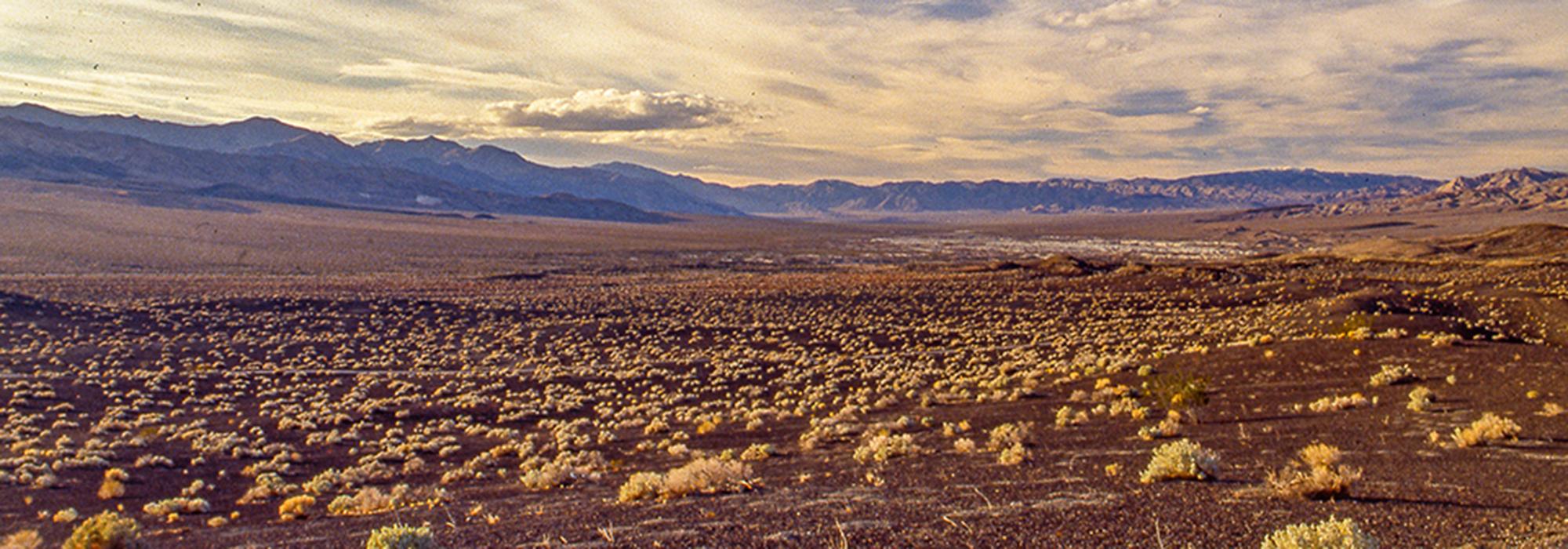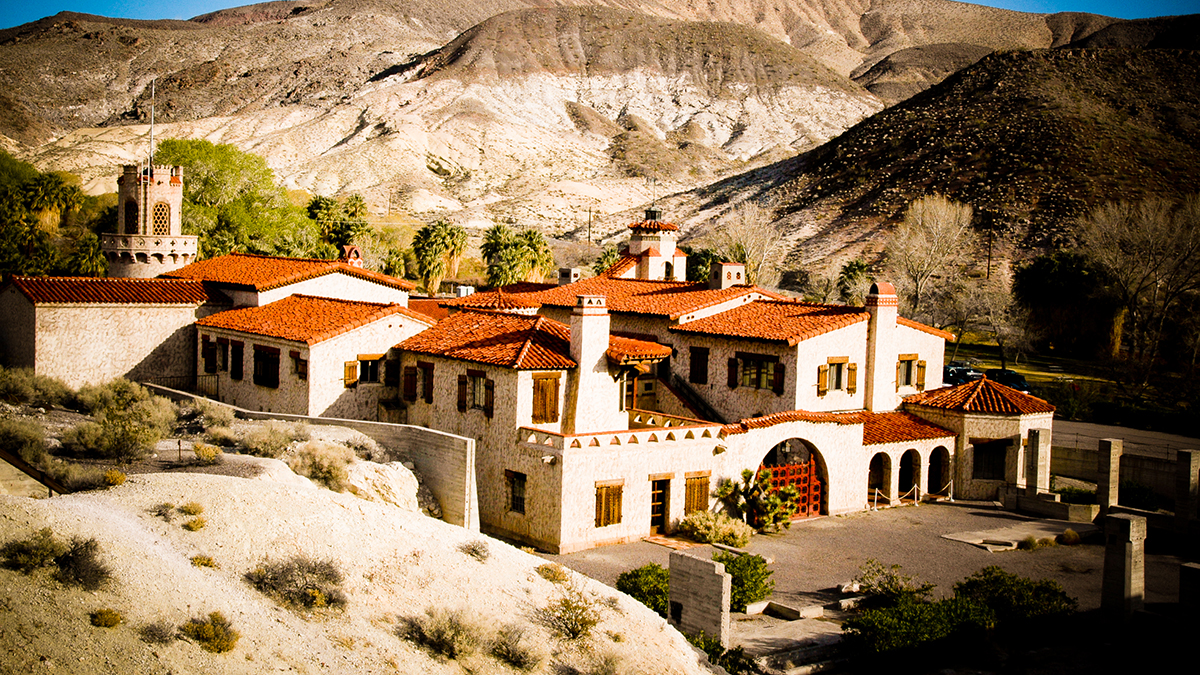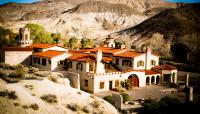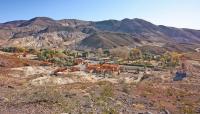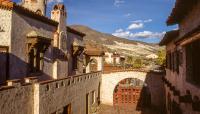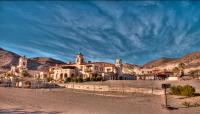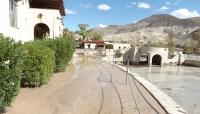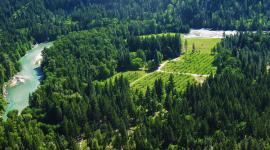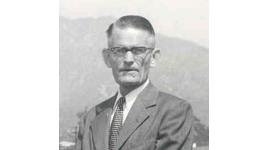Landscape Information
Nestled within Grapevine Canyon at the edge of Death Valley National Park is the ornate complex of buildings erected for Chicago millionaire Albert Johnson and his wife, Bessie, from 1922 to 1931. Drawn to the area by conman Walter Scott (a.k.a. Death Valley Scotty), who persuaded him to invest in a fabled goldmine, Johnson gradually fell in love with the surroundings and built a permanent winter estate on the site of the abandoned Steiniger Ranch, along with a smaller settlement for Scott, with whom he maintained a lifelong friendship. The onset of the Great Depression and a series of land disputes left the estate incomplete. It nevertheless became a popular tourist attraction and was sold to the National Park Service in 1970.
The mainstay of the 1,500-acre historic district is Scotty’s Castle, a complex designed by architects Charles MacNeilledge and Martin de Dubovay, including the Main House and Annex, the Hacienda, Gas House, and five-story Chimes Tower. These were to be connected via a network of subterranean tunnels, which were never completed. Bound by concrete fences built on site and erected by Native Americans, the grounds were designed by landscape architect Dewey Kruckeberg, who imported olive and palm trees and planted saguaro cacti brought from Arizona. The grounds also boasted a pear-shaped swimming pool (unfinished), a boulder-lined watercourse, rock gardens, a Tea Garden, and vineyards. The complex is aligned on an east-west axis, bordered to the south by lush green lawns, a paved parking lot, and tree groves that serve as planting screen. A narrow lane leads from the Chimes Tower to Scott’s hillside grave overlooking the castle. Prominent features at the Lower Ranch, where Scott resided, include the redwood ranch buildings, a reservoir, a natural spring terrace, and agricultural fields. The Lower Ranch and Scotty's Castle comprise the Death Valley Scotty Historic District, which was listed in the National Register of Historic Places in 1978.



